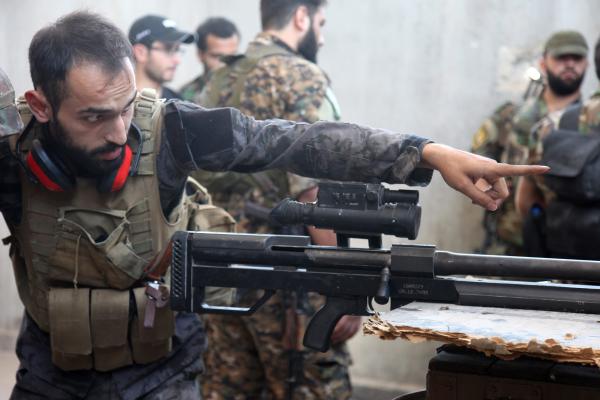Amnesty International reported the deaths of more than 17,000 prisoners in the Syrian regime’s prisons during a period of five years. The organisation documented “horror stories” about torture that includes scalding with hot water and beating detainees to death.
In its report on torture and death in state prisons that it published yesterday, Amnesty International stated that 17,723 people have died in custody between March 2011 and December 2015, an average of more than 300 people a month. In comparison, 3 to 4 people died in custody per month during the ten years leading up to 2011, the year when the peaceful protest movement against the regime started. The protests later evolved into a bloody dispute involving various parties. The organisation suggested that the number of people who died may be more.
According to the Syrian Observatory for Human Rights, there are currently more than 200,000 people who have been detained or are missing in the regime’s prisons since 2011.
Agence France-Presse quoted the Middle East and North Africa Director at Amnesty International Philip Luther as saying that “For decades, Syrian government forces have used torture as a means to crush their opponents. Today, it is being carried out as part of a systematic and widespread attack directed against anyone suspected of opposing the government in the civilian population and amounts to crimes against humanity.”
The organisation based its report on the testimonies of 65 survivors of torture. It singled out the Saydnaya military prison which is one of the largest Syrian prisons with the worst reputation.
Former inmates who survived said that they “saw prisoners die in custody”, and others said they were held in solitary confinement alongside “the dead bodies of detainees”.
Luther added that “The catalogue of horror stories featured in this report depicts in gruesome detail the dreadful abuse detainees routinely suffer from the moment of their arrest, through their interrogation and detention behind the closed doors of Syria’s notorious intelligence facilities. This journey is often lethal, with detainees being at risk of death in custody at every stage.”
The first thing that survivors talk about is the “welcome party” – the terrifying ceremony that awaited new arrivals. These involved beatings with metal bars and cables that were followed by so-called “security checks”, during which women in particular were subjected to rape and sexual assault by male guards.
The report also quoted Samir, a lawyer who was captured near the city of Hama, as saying “They treated us like animals. They wanted people to be as inhuman as possible… I saw the blood, it was like a river… I never imagined humanity would reach such a low level… they would have had no problem killing us right there and then”.
Detainees endured relentless torture and other ill-treatment during interrogation at intelligence branches in order to extract “confessions” or other information or as a punishment. Common methods included forcibly contorting the victim’s body into a rubber tyre and flogging on the soles of the feet. Other types of punishment included electric shocks, rape, sexual violence, pulling detainees’ fingernails or toenails out, scalding them with hot water or burning them with cigarettes.
